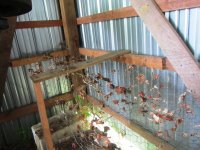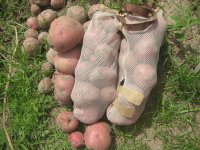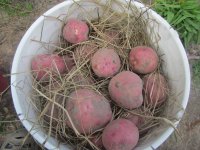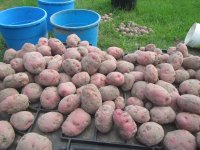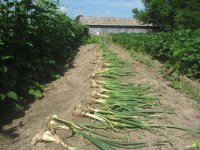Potatoes: Spring crop, fall crop, can some and dry store some...year around supply.
Corn: three crops staggered, freeze excess...year around supply
Tomatoes: Spring crop, fall crop, excess is mostly canned, and some is frozen...year around supply
Beans: Spring crops, fall crops, can excess pintos, Limas, bingos, navy, and green beans...year around supply
Peppers: spring planting yields continuous harvest with peaks in June and October. Freeze excess jalapenos and sweet peppers...year around supply.
Okra: continuous production through summer months, freeze excess...year around supply.
Peas: spring crop of sweet peas, summer and fall crops of cow peas, can excess...year around supply.
Beets: planting in fall yields an early spring/late winter harvest that is mostly canned as pickled beets...year around supply.
Broccoli: Fall plantings and late winter plantings yield fresh broc from Oct. through February. Some excess is frozen, but most consumed fresh...year around supply.
Cabbage: Fresh supply from Oct. through February
Carrots: several plantings through fall yield late winter spring harvests, excess is canned...year around supply
Onions: Spring crop of 200 pounds plus consumed and dry stored in sheds provides supply until about January and then we supplement with green onions fresh until the spring harvest...year around supply.
Cucumbers: Spring plantings and fall plantings yield continuous supply fresh from May through Oct. Excess is canned as sweet and dill pickles.
Sweet Potatoes: Produce great summer crop which I store in dark cool location that lasts months. Not big consumers of sweet potatoes so one crop is enough for all year.
Bok choy, collards, lettuce, radishes, chard, turnips, are all mostly cool season crops consumed fresh. Similarly, watermelons, cantaloup, honey melons are seasonal and consumed fresh.
Probably forgot some. We grow about 95% of the veggies we consume in the garden and consume as much as possible fresh.




